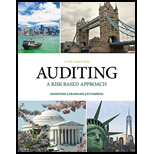
a.
Introduction: Sampling is the technique of selecting a smaller portion for a large population for the purpose of statistical analysis or research. There are various methods of selecting a sample depend upon the type of analysis or research.
The
b.
Introduction: Sampling is the technique of selecting a smaller portion for a large population for the purpose of statistical analysis or research. There are various methods of selecting a sample depend upon the type of analysis or research.
To calculate: Sampling interval.
c.
Introduction: Sampling is the technique of selecting a smaller portion for a large population for the purpose of statistical analysis or research. There are various methods of selecting a sample depend upon the type of analysis or research.
The largest value use for a random start.
d.
Introduction: Sampling is the technique of selecting a smaller portion for a large population for the purpose of statistical analysis or research. There are various methods of selecting a sample depend upon the type of analysis or research.
To identify: The item included in the sample
e.
Introduction: Sampling is the technique of selecting a smaller portion for a large population for the purpose of statistical analysis or research. There are various methods of selecting a sample depend upon the type of analysis or research.
To compute: The probability of selecting each of the following population items
f.
Introduction: Sampling is the technique of selecting a smaller portion for a large population for the purpose of statistical analysis or research. There are various methods of selecting a sample depend upon the type of analysis or research.
Including fewer logical units than computed sample size determines the final sample size.
Want to see the full answer?
Check out a sample textbook solution
Chapter 8 Solutions
Auditing: A Risk Based-Approach (MindTap Course List)
 College Accounting, Chapters 1-27AccountingISBN:9781337794756Author:HEINTZ, James A.Publisher:Cengage Learning,
College Accounting, Chapters 1-27AccountingISBN:9781337794756Author:HEINTZ, James A.Publisher:Cengage Learning,
